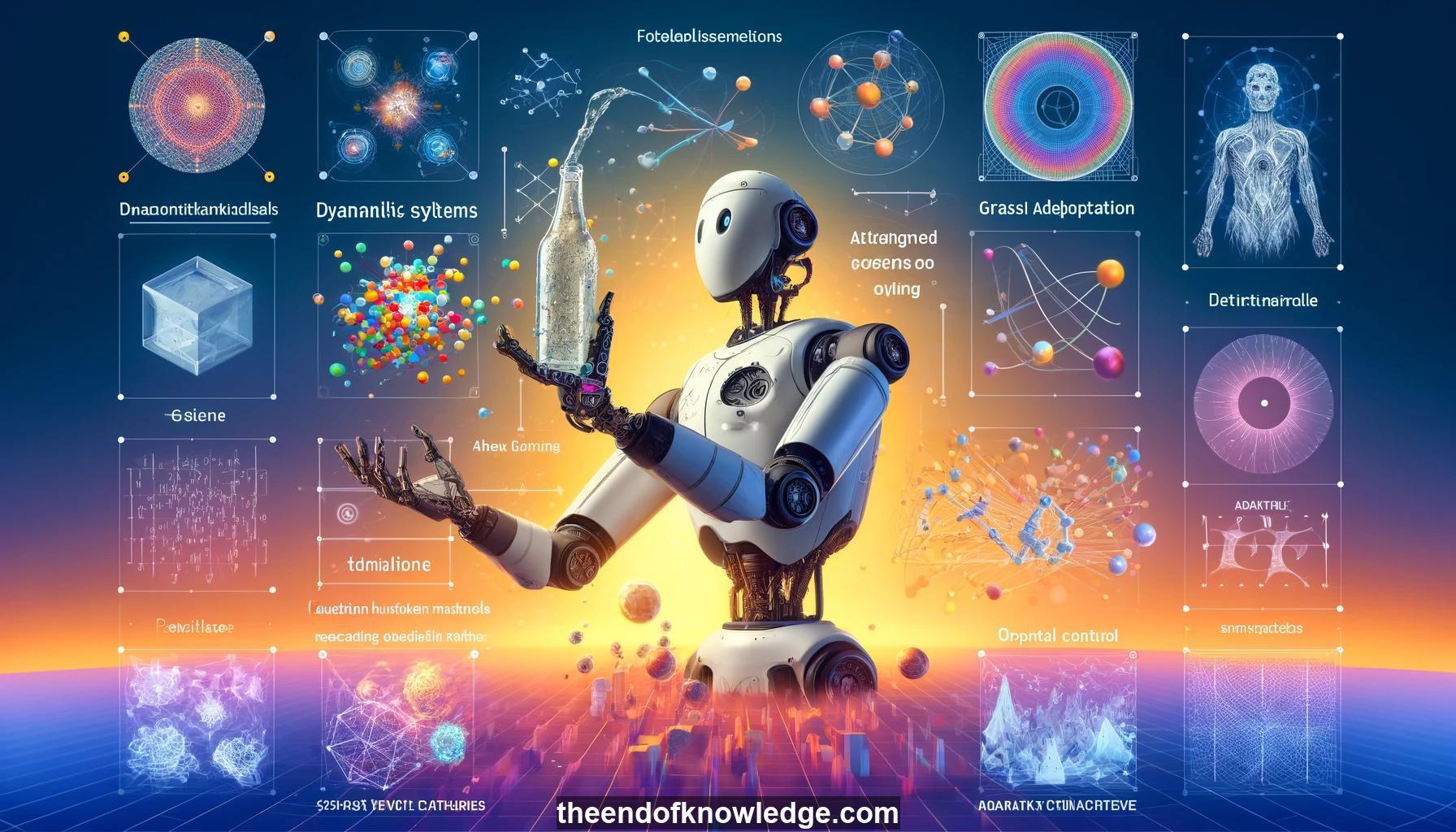 >
>
Concept Graph & Resume using Claude 3.5 Sonnet | Chat GPT4o | Llama 3:
Resume:
1.- Aude Billard is a robotics and machine learning professor at EPFL who has made significant contributions in robot control and learning.
2.- Controlling robots to catch fast-moving objects is challenging due to uncertainty in the object's motion and limited time for computation.
3.- Machine learning can help model uncertainty and enable fast computation of control paths compared to pure control theory approaches.
4.- Dynamical systems can be learned from demonstration to generate stable, closed-form control policies that enable real-time tracking of moving targets.
5.- Multi-attractor dynamical systems allow the robot to adapt its grasp configuration in real-time to catch objects like flying bottles.
6.- Support vector machines can be used to learn switching boundaries between different attractor systems for fast runtime decision making.
7.- Gaussian mixture models can compactly represent probability distributions over robot configurations for collision-free path planning between multiple collaborating arms.
8.- Optimal control can be used to generate training data offline when human demonstrations are unavailable, and reinforcement learning can further optimize policies.
9.- Tactile sensing and vision enable a robot to estimate an object's pose and adapt its grasp on the fly.
10.- Machine learning is crucial for manipulation of deformable objects like food items, where explicit physical models are very difficult to obtain.
11.- The combination of control theory and machine learning is important - control provides feasible solutions and guarantees, while ML efficiently approximates policies.
12.- The online dictionary learning for sparse coding paper from 2009 has had significant impact in the past decade.
13.- Matrix factorization decomposes a data matrix into a dictionary and sparse code, useful for unsupervised learning and efficient representation.
14.- Many variants of matrix factorization exist with different constraints on the factors, yielding techniques like NMF, sparse PCA, structured sparse coding.
15.- Sparse coding, introduced in 1996, automatically discovers useful features like Gabor filters from natural image patches via a sparsity prior.
16.- The sparsity principle of selecting the simplest explanation for data has a long history, from Rinsch and Jeffries in the 1920s onward.
17.- In the 2000s, sparse coding led to state-of-the-art results in image denoising, inpainting, and other restoration tasks.
18.- Matrix factorization also found success in computer vision, winning Pascal VOC and ImageNet challenges, as well as collaborative filtering and bioinformatics.
19.- Alternating minimization is a standard algorithm for matrix factorization but requires loading all data into memory, not suitable for large datasets.
20.- Stochastic gradient descent is more scalable but requires carefully tuning learning rates and can be slow to converge.
21.- The authors proposed an online algorithm that is as fast as well-tuned SGD but does not require learning rate tuning.
22.- Key ideas are: 1) dictionary update is fast if optimal sparse codes are known, 2) optimal codes can be approximated online.
23.- Convergence to stationary points is guaranteed by exploiting problem structure, despite the optimization being non-convex, constrained, and stochastic.
24.- The work's impact comes from timeliness (increasing dataset sizes), robust/practical software, and flexibility to adapt to various applications.
25.- The SPAMS toolbox implementing the algorithm has found diverse applications, from modeling tree leaves to analyzing spatial gene expression patterns.
26.- Dictionary learning has connections to neural networks - sparse coding is related to ReLU activations, and end-to-end learning via backprop is possible.
27.- Convolutional and multi-layer sparse coding is possible, related to approaches like the LISTA neural network architecture.
28.- The simplicity principle behind sparsity remains relevant today for interpretability and model selection, though perhaps in a different form than the L1 norm.
29.- Simplicity alone is likely not enough, and other properties like robustness and stability are also important to consider.
30.- Releasing easy-to-use, robust software together with research publications can significantly increase impact, including on fields beyond the original domain.
Knowledge Vault built byDavid Vivancos 2024